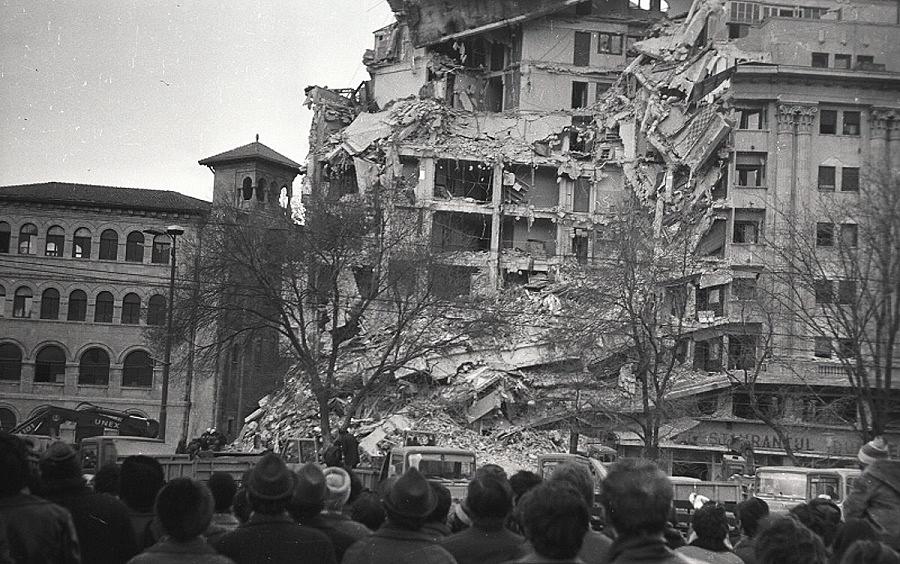40 years after the great earthquake of 1977, Bucharest is not prepared to withstand a similar event



The Romanian authorities have taken few measures in the last 27 years to prepare Bucharest for a strong earthquake. Thus, 40 years after the great earthquake of March 4, 1977, which killed almost 1,400 people in Bucharest, the capital continues to be exposed to the forces of nature.
Should a similar earthquake hit Romania today, it would probably leave Bucharest's Old Town in ruins, specialists estimate. A disaster simulation carrier out by the Ministry of Interior in November 2016 took into account that a 7.6-magnitude earthquake would leave some 1,500 people dead and 4,100 injured in Bucharest alone.
There are currently 772 buildings with seismic risk in Bucharest and only 79 such buildings have been consolidated in the last 27 years, according to official data from the Bucharest City Hall.
Some 347 buildings are high-seismic risk, which means that they would likely fall if a strong quake shakes Romania, according to updated lists on the city hall's website. These buildings are marked with a red dot. Moreover, 174 of these red-dot buildings are considered public danger, which means that there are little chances that they will remain standing if an earthquake similar to that in 1977 hits the capital.
 There are also 330 buildings in the second category of seismic risk, which would likely withstand an earthquake but suffer major structural damages, and 95 buildings in the third category, which would suffer significant structural damages.
There are also 330 buildings in the second category of seismic risk, which would likely withstand an earthquake but suffer major structural damages, and 95 buildings in the third category, which would suffer significant structural damages.
Most of these buildings are located in Bucharest's central area, including the Old Town, the streets around Cismigiu Park, the Magheru Boulevard, and date from the interwar period. Some are even older, being built at the end of the 19th century.
"One can count on his fingers the buildings from Bucharest's historic area which would rezist, without major damages, to such an earthquake," according to Stefan Dumitrascu, the chief-architect of Bucharest's District 3, quoted by local Digi 24.
However, that's not all. There are also more than 1,500 buildings which haven't been properly assessed to be included in a risk category. The owners' associations should call experts to evaluate how safe these buildings are.
In 2016, the Government allotted some RON 25 million (EUR 5.5 million) for consolidating seismic risk buildings, five times more than in 2015. However, no building was consolidated last year, according to an analysis by local Profit.ro. At the end of 2016, Profit.ro reported that the Romanian local authorities would be able to forcefully evict the owners of apartments located in buildings with high seismic risk until the buildings are consolidated.
In 2015, as part of a wider series of measures concerning public safety, which started with the Colectiv club fire, authorities asked companies such as cafes, restaurants, bank units, shops, cinemas, and theaters operating in buildings with a high seismic risk to close their businesses. Some 366 buildings in Bucharest were identified at the time as being of first class seismic risk, while 306 buildings were classified as being in the second class of seismic risk.
A 2014 story in The Guardian called Bucharest “the earthquake capital of Europe.” The article noted that 374 buildings in the capital’s old center were classified as having the highest, first class seismic risk.
On March 4, 1977, the Eastern region of Romania was struck by an 7.2 Richter scale earthquake. The shock-waves destroyed more than 30 high-rise buildings in the capital, and more than 1,500 people were killed in the event.
Potential damages of EUR 1.8 bln if catastrophic earthquake hits Romania
editor@romania-insider.com
(Photo source: Flickr)